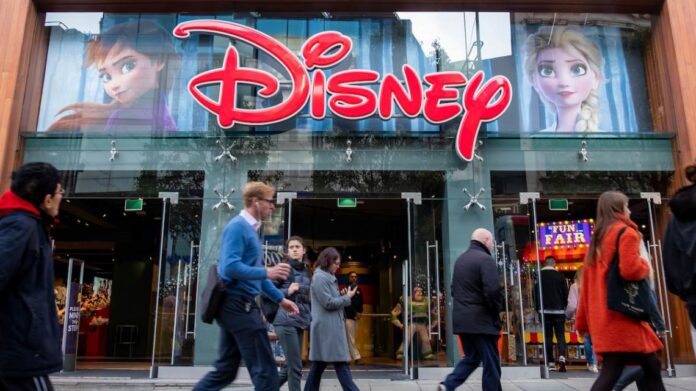Pop the confetti, light up the fireworks, and grab your mouse ears—it’s time to celebrate! 2023 marks one hundred years of the Walt Disney Company making dreams come true.
It all started in 1923 with two brothers — Walt and Roy O. Disney – quietly sketching out a vision that would change the entertainment industry forever. But let’s not get ahead of ourselves.
Before the Magic: The Animation Landscape
Pre-Disney animation had charm and potential but lacked the technology and the vision to push the boundaries. Pioneering artists like Winsor McCay, with his animated “Gertie the Dinosaur” in 1914, were revolutionaries at the time. Still, these early animations were basic drawings and lacked a strong storyline and character development.

Gertie the Dinosaur. Credit: Wikimedia Commons.
And then, the Walt Disney Company stepped into the spotlight
Walt Disney, the creative half of the duo, had already amassed experience producing short films based on popular fairy tales for Laugh-O-Gram Studio. When the studio went bankrupt, Walt moved to Hollywood and joined forces with his brother Roy, the business-minded half.
During an interview with a Canadian radio show many years later, Walt Disney would say, “I came to Hollywood and arrived here in August 1923 with $30 in my pocket and a coat and a pair of trousers that didn’t match. And one half of my suitcase had my shirts and underwear and things…the other half had my drawing materials.”
Despite the hardships, the brothers created the Disney Brothers Studio, where they produced short live-action/animated shorts (including their very first animated character, Oswald the Lucky Rabbit) before deciding they wanted to create a character they could call their own. The result? The birth of the world’s most famous mouse.
The Magnificent Mouse
When Mickey Mouse danced his way onto the screen in “Steamboat Willie” in 1928, it changed the world of animation forever. And it wasn’t just because of the adorable mouse himself. It was also because this was the first time an audience would hear synchronized sound accompanying animation — characters whistled and laughed, boats puffed smoke, birds sang. Remember, this was still the era of silent films, with just a few “talkies” (films with sound) starting to appear — so an animated film with synchronized sound was a big deal.
The animation world was set for another revolution in 1932 when Disney produced the first Technicolor cartoon, the silly symphony “Flowers and Trees.” Adding full color to cartoons made the characters and landscapes more vibrant and engaging and surely must have wowed audiences at the time.
This wasn’t an easy production either — to get a full-color film, Disney experts had to film with a special camera that separated the red, green, and blue components of the light and then process and project the films together to produce a full-color image on the screen.
Welcome to the Happiest Place on Earth
As the 30s made way for the 40s, Disney switched its focus to full-length animated features, starting in 1937 with “Snow White and the Seven Dwarfs” — which premiered to a record-breaking audience at the Carthay Circle Theatre in Los Angeles.
It was a daring move and a resounding success — the film cost $1.4 million to produce and grossed $8.5 million, the equivalent to hundreds of millions of dollars today. With that, the ‘Golden Age’ of animation had begun.
Disney produced some of its most beloved classics in the 1940s, including “Fantasia,” “Dumbo,” and “Bambi,” despite the challenges brought on by World War II — a time when many of Disney’s artists were drafted, forcing the studio to scale down production.
Walt Disney kept dreaming big, though, and in 1955 Disneyland opened its doors. He would later confess that the original idea came to him on a Saturday afternoon as he was sitting on a bench watching her two daughters riding a merry-go-round — “just a daddy with two daughters wondering where he could take them where he could have a little fun with them too.”
Disney’s commitment to family entertainment and storytelling has never waned. Today, the magic of Disney’s parks and films continue to inspire and entertain millions of visitors every year — all thanks to the dreams of a man who dared to imagine that a mouse could change the world.
By Diana Bocco, contributor for Ripleys.com
EXPLORE THE ODD IN PERSON!
Hits: 0











